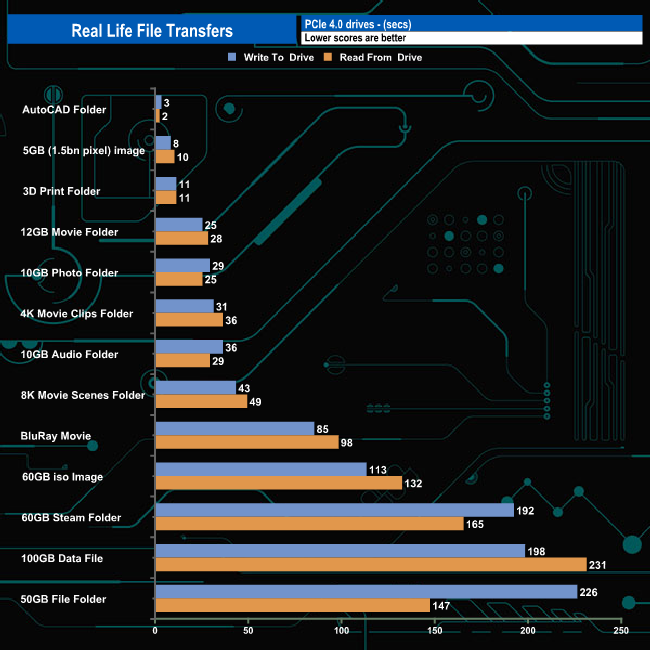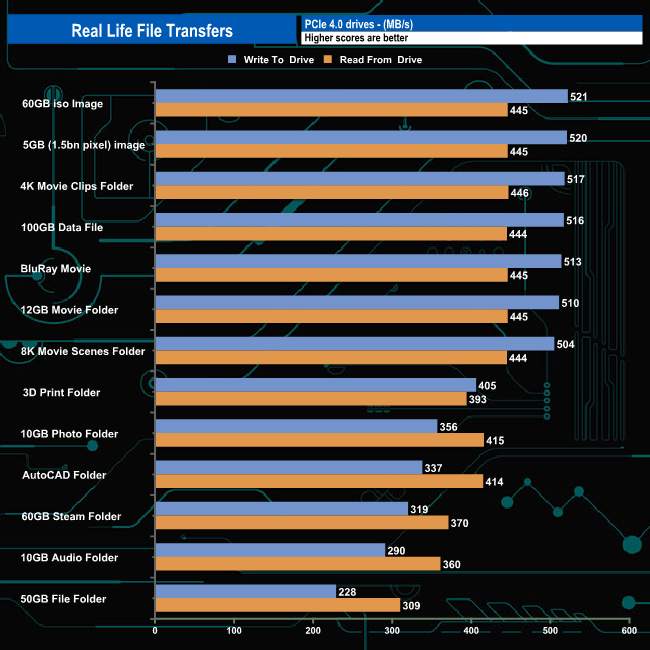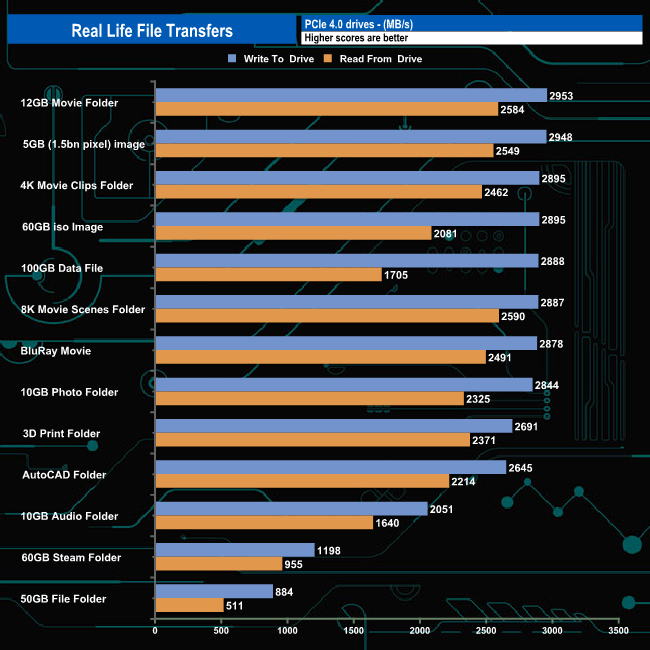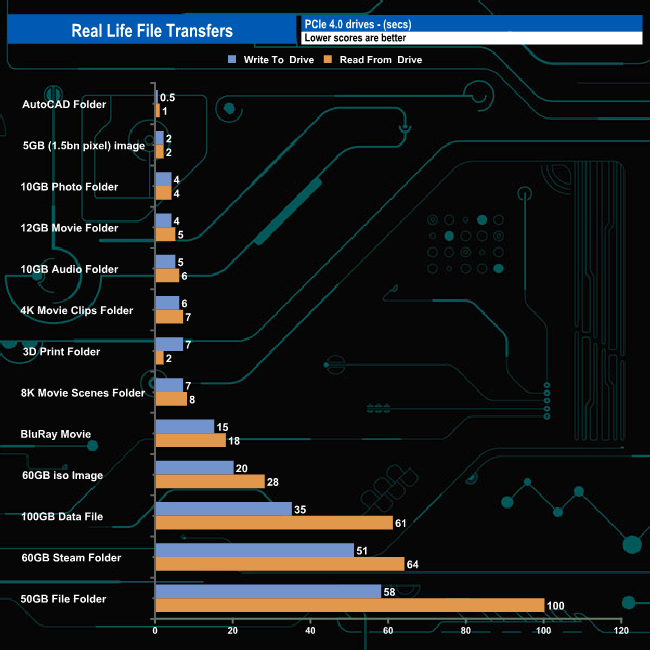To test the real-life performance of a drive we use a mix of folder/file types and by using the FastCopy utility (which gives a time as well as MB/s result) we record the performance of drive reading from & writing to a 256GB Samsung SSD850 Pro.
We use the following folder/file types:
- 100GB data file.
- 60GB iso image.
- 60GB Steam folder – 29,521 files.
- 50GB File folder – 28,523 files.
- 12GB Movie folder – (15 files – 8 @ .MKV, 4 @ .MOV, 3 @ MP4).
- 10GB Photo folder – (304 files – 171 @ .RAW, 105 @ JPG, 21 @ .CR2, 5 @ .DNG).
- 10GB Audio folder – (1,483 files – 1479 @ MP3, 4 @ .FLAC files).
- 5GB (1.5bn pixel) photo.
- BluRay Movie – 42GB.
- 21GB 8K Movie demos – (11 demos)
- 16GB 4K Raw Movie Clips – (9 MP4V files).
- 4.25GB 3D Printer File Folder – (166 files – 105 @ .STL, 38 @ .FBX, 11 @ .blend, 5 @ .lwo, 4 @ .OBJ, 3@ .3ds).
- 1.5GB AutoCAD File Folder (80 files – 60 @ .DWG and 20 @.DXF).

The Corsair MP600 Pro XT handled our real-life file testing without displaying any real problems. It averaged 514.42MB/s when writing the larger test files to the drive and 444.85MB/s when reading the data back again. It’s not as efficient when handling the folders that contain lots of small files averaging 322.5MB/s for writes and 376.83MB/s for reads.
To get a measure of how much faster PCIe NVMe drives are than standard SATA SSD's we use the same files but transfer to and from a 2TB Kioxia Exceria Plus drive:
Switching over to an all NVMe storage environment saw, as you would imagine, huge rises in transfer rates particularly when the drive was dealing with the larger file size transfers. Ten of the transfers topped well over 2.5GB/s when writing to the drive, the best being the 2,953MB/s when writing the 12GB Movie Folder to the drive. Reads, although much improved, didn’t quite hit the heights of the write performance, the best being the 2,590MB/s when reading the contents of the 8K movie scene folder.
 KitGuru KitGuru.net – Tech News | Hardware News | Hardware Reviews | IOS | Mobile | Gaming | Graphics Cards
KitGuru KitGuru.net – Tech News | Hardware News | Hardware Reviews | IOS | Mobile | Gaming | Graphics Cards





